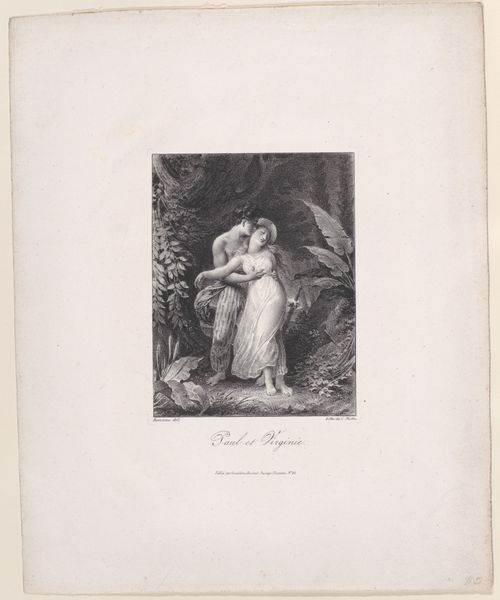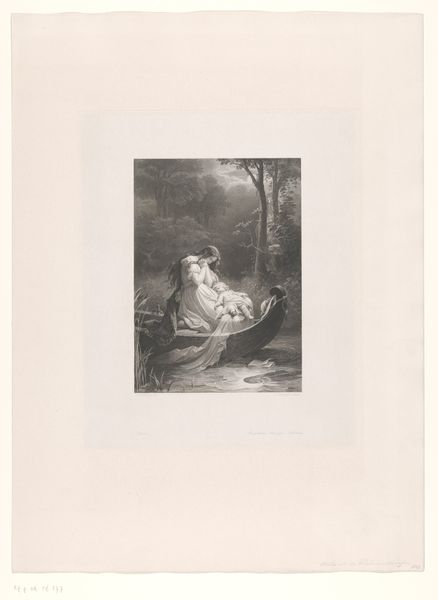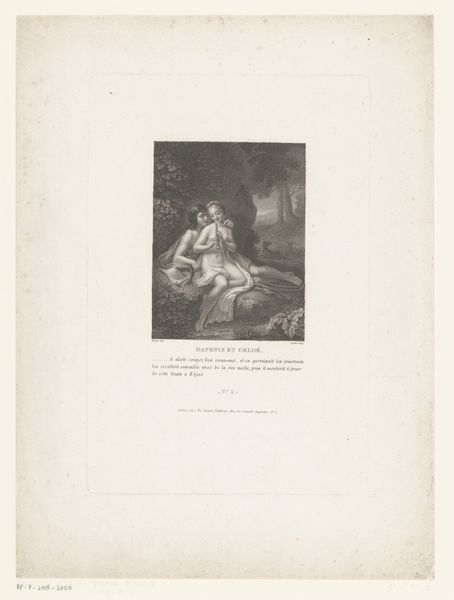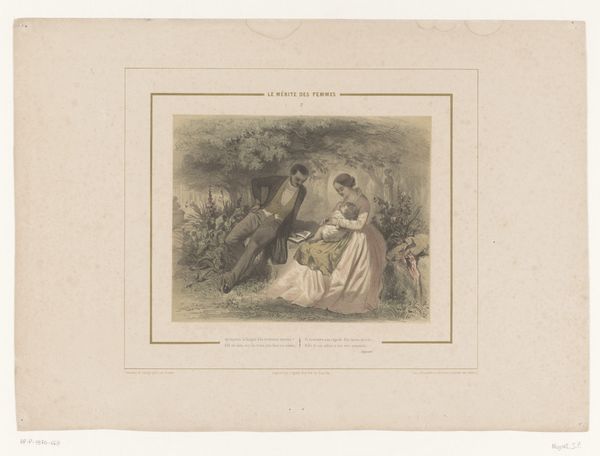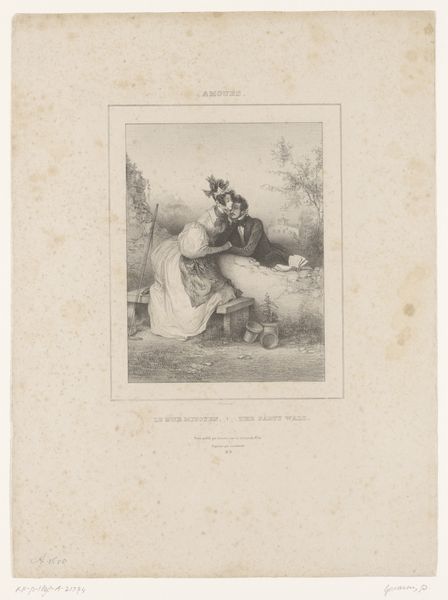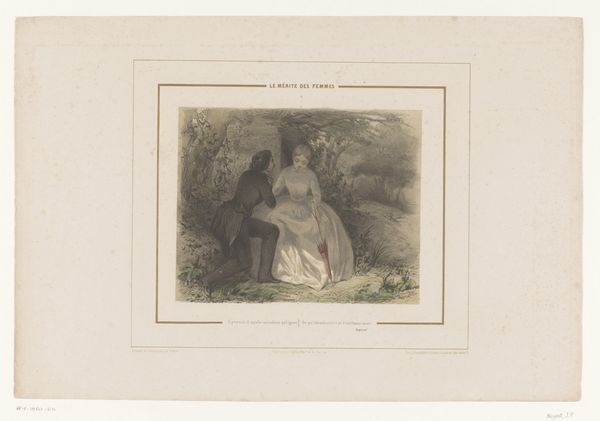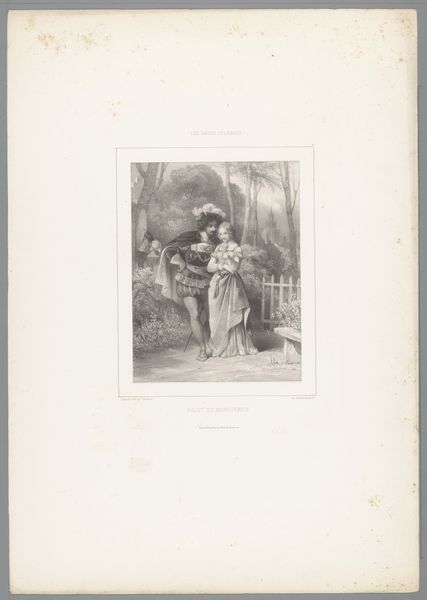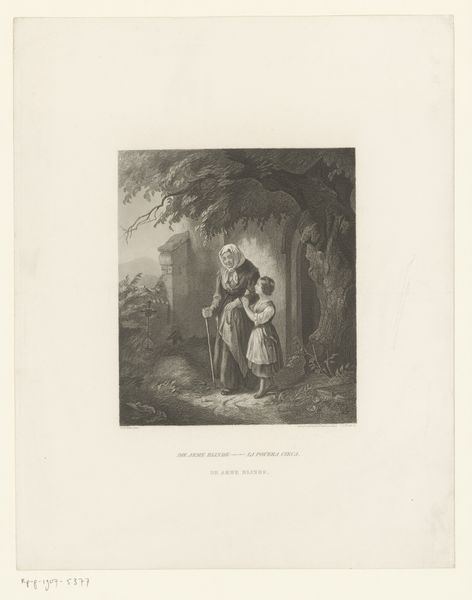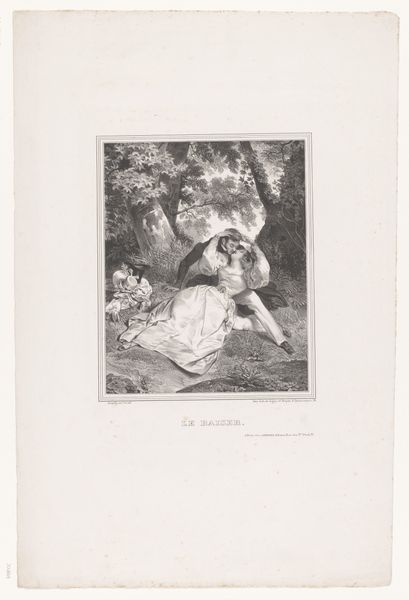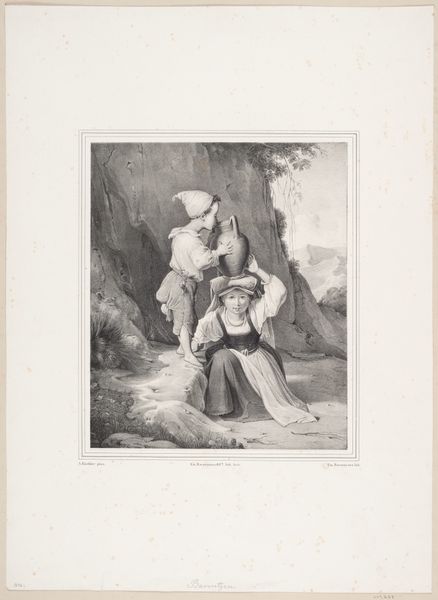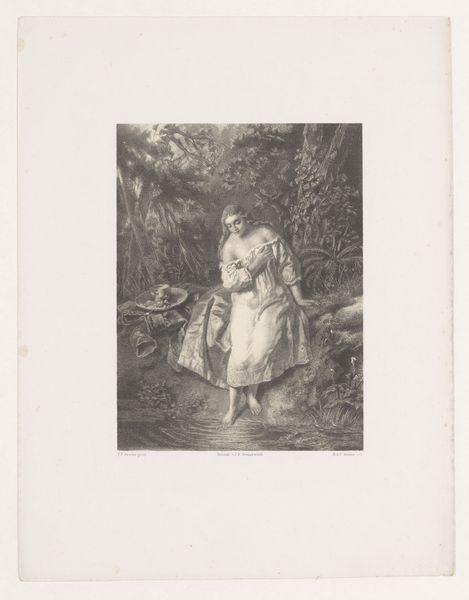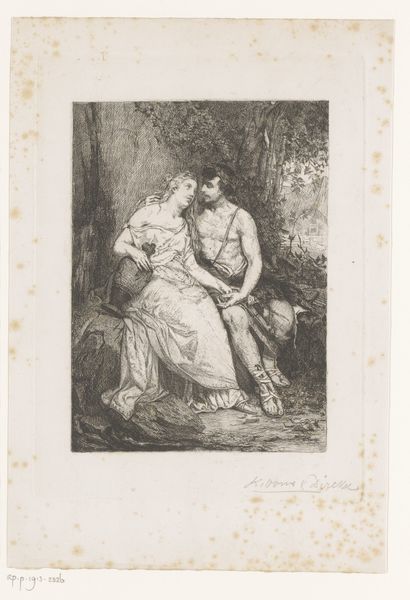
print, paper, engraving
# print
#
old engraving style
#
landscape
#
figuration
#
paper
#
romanticism
#
genre-painting
#
engraving
Dimensions: height 361 mm, width 268 mm
Copyright: Rijks Museum: Open Domain
Curator: Let's take a moment to appreciate this engraving from 1826, "Daphnis and Chloe" by Alexandre Joseph Desenne. Editor: The first thing that strikes me is the almost dreamlike quality. The soft gradations achieved in this print really create a gentle, idyllic atmosphere. Curator: Desenne’s work situates itself within a resurgence of interest in classical pastoral themes, a trend we can trace back through Romanticism's obsession with idealized nature and escapism. The representation of these figures points to broader cultural anxieties of the period. Editor: Yes, the social history context here is interesting. These idealized figures offered a contrast to the emerging urban landscape. It also speaks to the time's attitude toward beauty, innocence, and probably, anxieties around a rapidly changing world. Do you think the format - as a print, distributed widely - influenced that escapist message? Curator: Undoubtedly. The availability of this artwork, the reproduction of imagery to wider audience, solidifies its role in shaping public perception of romantic relationships, specifically through this classical lens. How the power relations inherent in pastoral life become sanitized. I'm curious, do you think the printmaking technique contributes or distracts from this overall theme? Editor: That's a good question. It feels to me, that its reproducibility is the defining character of this piece. As opposed to its uniqueness and its artist. You are correct - there is this mass-production aspect. That said, its delicate touch makes me forget about that to some degree. Curator: It is worth considering what's highlighted in this work. Representations of youthful innocence are still something we're grappling with, in both art history and the modern digital era. What messages and images are distributed, who has access, and what power structures influence or determine all of that. Editor: And isn’t that fascinating - how our understanding evolves as our own context shifts? Thanks for shedding light on those aspects!
Comments
No comments
Be the first to comment and join the conversation on the ultimate creative platform.
